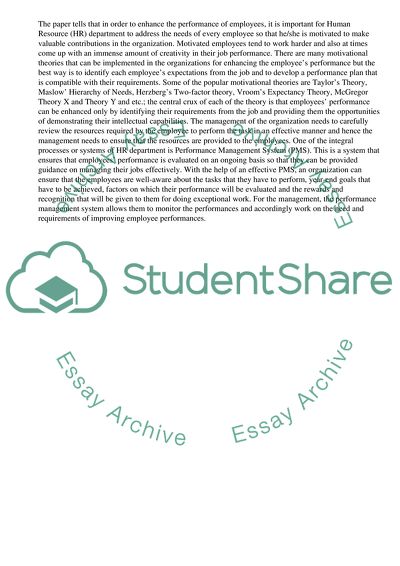Cite this document
(“Effective Performance Management System for enhancing employees Essay”, n.d.)
Effective Performance Management System for enhancing employees Essay. Retrieved from https://studentshare.org/management/1609482-one-of-the-main-functions-of-human-resource-management-is-to-ensure-that-the-performances-of-individuals-are-managed-effectively-so-that-employees-get-motivated-and-committed-but-it-could-result-de-motivation-if-it-is-not-properly-managed
Effective Performance Management System for enhancing employees Essay. Retrieved from https://studentshare.org/management/1609482-one-of-the-main-functions-of-human-resource-management-is-to-ensure-that-the-performances-of-individuals-are-managed-effectively-so-that-employees-get-motivated-and-committed-but-it-could-result-de-motivation-if-it-is-not-properly-managed
(Effective Performance Management System for Enhancing Employees Essay)
Effective Performance Management System for Enhancing Employees Essay. https://studentshare.org/management/1609482-one-of-the-main-functions-of-human-resource-management-is-to-ensure-that-the-performances-of-individuals-are-managed-effectively-so-that-employees-get-motivated-and-committed-but-it-could-result-de-motivation-if-it-is-not-properly-managed.
Effective Performance Management System for Enhancing Employees Essay. https://studentshare.org/management/1609482-one-of-the-main-functions-of-human-resource-management-is-to-ensure-that-the-performances-of-individuals-are-managed-effectively-so-that-employees-get-motivated-and-committed-but-it-could-result-de-motivation-if-it-is-not-properly-managed.
“Effective Performance Management System for Enhancing Employees Essay”, n.d. https://studentshare.org/management/1609482-one-of-the-main-functions-of-human-resource-management-is-to-ensure-that-the-performances-of-individuals-are-managed-effectively-so-that-employees-get-motivated-and-committed-but-it-could-result-de-motivation-if-it-is-not-properly-managed.


